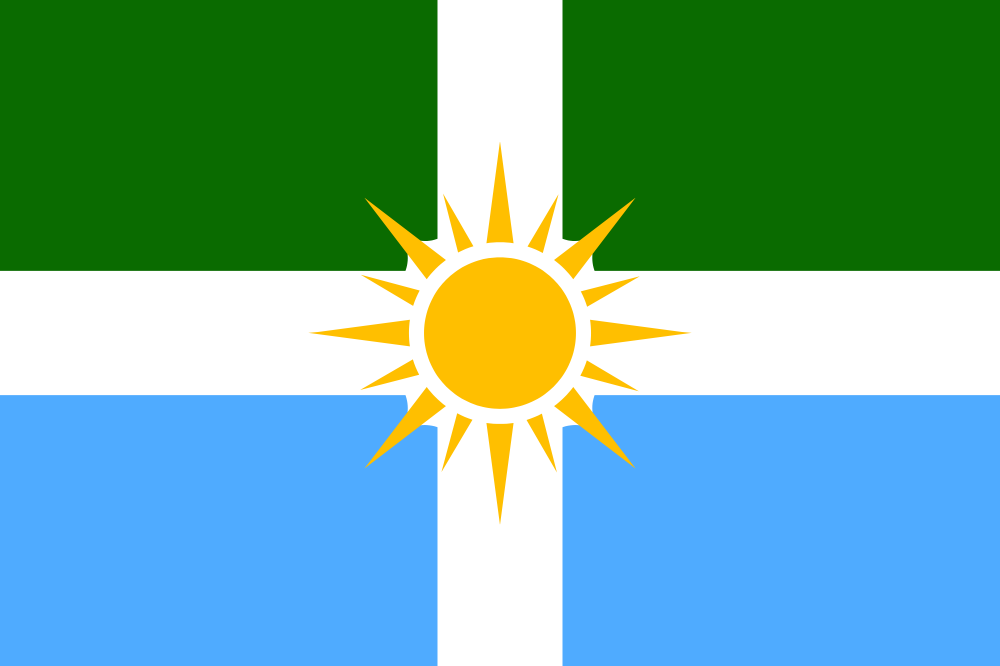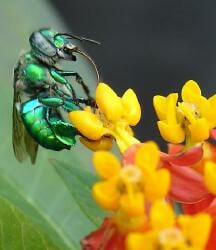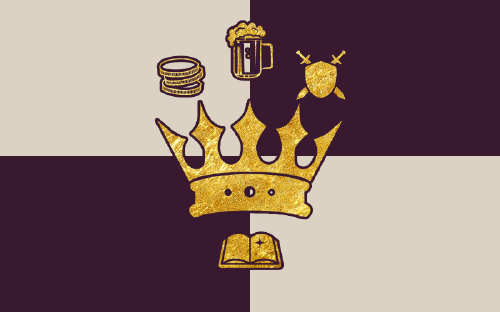| National Factbook |
| Flag: |

|
| Nation Name: |
Cupey |
| Leader Name: |
Ita |
| Currency: |

Petalo |
| National Animal: |

Emerald Bee |
| History: |
"Several hundred years ago, the world bore witness to an event of unparalleled magnitude—the sudden and unexplained arrival of the Cupey Archipelago upon the seas of Orbis. This phenomenon, referred to by scholars as "The Transposition," reshaped both the physical and political landscapes of the planet and remains one of the most perplexing mysteries in recorded history.
Prior to its emergence, Cupey existed in a separate realm, one whose history, cultures, and geography had developed independently of Orbis. Then, without warning, the entirety of the Cupey landmass—spanning the vast chain of tropical islands that now dot the equatorial seas—manifested within the maritime expanse of Orbis. This event was not merely a shift in place, but a wholesale displacement, as if Cupey had been severed from its prior existence and grafted onto an unfamiliar world.
Contemporary records from seafaring nations describe a violent disturbance in the oceanic currents, the abrupt appearance of land where once there had been only open sea, and a great roar of displaced air and water that sent shockwaves across the hemisphere. The skies were said to have darkened for three days, heavy with unnatural storms and strange celestial phenomena, as if the heavens themselves recoiled at the arrival of this foreign domain.
For the inhabitants of Cupey, the change was instantaneous. To them, there was no warning—no slow unraveling of their reality. The sun set one evening upon familiar waters, and when it rose again, the constellations were alien, the tides unfamiliar, and their neighbors of a former land known as "Maztica" were now absent. The scholars and mystics of Cupey struggled to comprehend the shift, but their lands remained intact, their cities untouched—only the world beyond had changed.
In the years that followed, Cupey adapted to its newfound existence within Orbis. Explorers ventured forth to discover the nature of their strange new home, while the nations of Orbis, at first wary, sought contact with the archipelago’s rulers. Trade, conflict, and diplomacy soon wove Cupey into the broader tapestry of Orbis’ history. Yet, the true cause of the Transposition remains a matter of debate—was it the work of divine intervention, a cosmic accident, or the result of a forgotten ritual that tore Cupey from its place in the multiverse?
Even now, the mystery of Cupey's arrival endures, a reminder that the fabric of reality is more fragile than mortals dare to imagine. "
- Word Weaver Raphael
Cupey is populated by a variety of races. Most are human, existing alongside the Yamuyan tabaxi and Iguaneyian lizard folk. Other races include elves, tieflings, devils, orcs, myconids, among many others. |
| Geography |
| Continent: |
North America |
| Land Area: |
20,680.02 sq. km |
| Terrain: |
"Cupey features a diverse and rugged terrain, characterized by a mix of coastal plains, rolling hills, and forested mountains. The central island of Oriken, home to the capital city of Areyto, is dominated by the a central mountain range that runs east to west, with the highest peak reaching over 1,300 meters. These highlands give way to karst formations in the north, marked by limestone caves, sinkholes, and underground rivers. The southern and coastal areas transition into flatter, more arid lands with fertile valleys supporting agriculture. Numerous rivers, originating in the mountains, traverse the landscape, creating lush green valleys and feeding into the surrounding ocean. The island’s varied topography contributes to a rich ecosystem, with tropical rainforests in the northeast, dry forests in the south, and mangrove-lined coasts.
The federation encompasses the a varied terrain of throughout its allied lands ranging from low-lying coral atolls to towering volcanic peaks. The region is defined by a mix of rugged mountain ranges, rolling hills, fertile valleys, and expansive coastal plains. The larger islands, such as those in the Greater Antilles, feature high mountain ranges—like the Cordillera Central and the Blue Mountains—interspersed with underground rivers, and lush rainforests. The Lesser Antilles, primarily volcanic in origin, are characterized by steep cliffs, crater lakes, and black-sand beaches. Coral reefs and mangrove swamps line much of the coastline, while the flatter islands support vast savannas and tropical forests. Numerous rivers and waterfalls carve through the landscape, contributing to the region’s biodiversity. Cupey’s terrain, shaped by tectonic activity and tropical weather patterns, fosters a rich variety of ecosystems, from dense jungles to arid scrublands, making it one of the most ecologically diverse regions in the world."
Sisaspia, H. (2097). Cupey: The Isles of Mystery and Majesty – A Chronicle of Land, Legacy, and Life. Cupey National Press, pp. 13-17. |
| Highest Peak: |
Yukiyu,
7,000 meters
|
| Lowest Valley: |
Batey,
-105 meters
|
| Climate: |
"Cupey experiences a predominantly tropical climate, characterized by warm temperatures, high humidity, and distinct wet and dry seasons. Coastal and lowland areas maintain average temperatures ranging from **24°C to 30°C (75°F to 86°F)** year-round, while mountainous regions offer cooler conditions, with temperatures dropping significantly at higher elevations.
Rainfall varies across the region, with the windward sides of islands receiving abundant precipitation, often exceeding 2,000 mm (78 inches) annually, supporting lush rainforests and fertile valleys. The leeward sides tend to be drier, featuring savannas and semi-arid landscapes. The wet season, typically from May to November, brings heavy showers and tropical storms, while the dry season, from December to April, offers more stable and sunny conditions.
Cupey is susceptible to tropical cyclones, with the Atlantic hurricane season running from June to November. These storms can bring intense winds, heavy rainfall, and coastal flooding. Oceanic trade winds help moderate temperatures, providing consistent breezes that make the climate more comfortable. Despite seasonal variations, Cupey remains warm and inviting year-round, supporting its rich biodiversity and vibrant ecosystems."
Sisaspia, H. (2097). Cupey: The Isles of Mystery and Majesty – A Chronicle of Land, Legacy, and Life. Cupey National Press, pp. 17-21. |
| People & Society |
| Population: |
744,961 people |
| Demonym: |
Cupeyian |
| Demonym Plural: |
Cupeyians |
| Ethnic Groups: |
Atabexi - 73.0%
Yamuy - 16.0%
Iguaney - 11.0% |
| Languages: |
Anacaon - 0.0%
Yamuyan - 10.0%
Iguaney - 20.0% |
| Religions: |
Grand Gardening - 100.0% |
| Health |
| Life Expectancy: |
150 years |
| Obesity: |
17.3% |
| Alcohol Users: |
34.7% |
| Tobacco Users: |
5.3% |
| Cannabis Users: |
43.2% |
| Hard Drug Users: |
2.5% |
| Economy |
| Description: |
Cupey boasts a diverse and resilient economy driven by trade, agriculture, aquaculture, tourism, and maritime industries. As an island nation, it relies heavily on its strategic location for international commerce, with bustling ports facilitating the movement of goods across Orbis. |
| Average Yearly Income: |
$44.10 |
| Gross Domestic Product (GDP): |
$1,367,100,032.00 |
| GDP per Capita: |
$1,835.13 |
| Gross National Income (GNI): |
$894,028,810.00 |
| Industries: |
Agriculture plays a momentous role within Cupeyian society. It's inhabitants have crafted a religion around the act, practicing several rituals throughout the year- the prupsoes and effects of whcih remain to be understood as they do not discuss the practices with outsiders, with fertile valleys and tropical climates supporting the cultivation of sugarcane, coffee, citrus fruits, and spices. Coastal plantations and inland farms contribute to both domestic consumption and exports. Fisheries and aquaculture, particularly trout farming, have expanded as a major industry, utilizing the island’s freshwater rivers and controlled marine environments to supply both local markets and foreign buyers. Cupey's unique strain of **tropical trout**, adapted to warm waters, has become a prized commodity.
Tourism is a key economic pillar, drawing visitors to Cupey’s pristine beaches, coral reefs, and historical cities. The nation's cultural richness—marked by music, cuisine, and festivals—bolsters a thriving hospitality sector.
The manufacturing and artisanal industries produce textiles, ceramics, and fine rum, while a growing technological sector in urban centers focuses on renewable energy and maritime innovations. Despite economic prosperity, Cupey faces challenges such as tropical storms, dependency on imports for certain goods, and maintaining sustainability in its expanding industries. However, its adaptable workforce and resourceful economy continue to drive growth and international influence. |
| Military |
| History: |
The military of Cupey, known as the Yabisi Guard, is a unique and formidable force that blends traditional warfare with arcane and ecological mastery. Due to the archipelago’s strategic location, its defense strategy emphasizes naval dominance, rapid deployment, and environmental adaptation. Cupey’s defense relies on a fusion of druidic magic, biomancy, and living constructs, creating a defense network that is both self-sustaining and adaptive. While Cupey maintains a skilled force of marines, rangers, and spellcasters, its most distinctive military asset is its golems forged from plant tissue, earth, and mycelium. These creatures, animated through ancient druidic rites and bio-arcane engineering, serve as frontline defenders, shock troops, and siege units.
Supporting these constructs are the most feared element of Cupey’s air defense is the Canopy Ward, a vast network of intelligent fungal spores and creeping vines that respond to aerial threats by extending into the sky, forming temporary barriers and ensnaring enemy fliers. This living defense system continuously regenerates, ensuring that Cupey’s skies remain a treacherous battleground for any would-be invader.
Cupey’s naval forces utilize living coral vessels reinforced with bioluminescent fungi, capable of self-repair and adapting to the tides. Spellcasters and biomancers serve as tacticians, directing the Verdant Golems through complex rituals. This fusion of magic, nature, and military strategy makes Cupey’s forces not only resilient and self-sustaining but also deeply connected to the land they defend.
It's Caonabo Guardians are massive aerial golems formed from woven vines, fungal filaments, and buoyant spores. These entities drift through the skies, held aloft by naturally occurring gases within their mycelial cores, and act as both sentries and interceptors.
While Cupey prioritizes defense and deterrence, its mastery of living constructs ensures that any would-be invaders must contend with an army that grows, heals, and evolves—turning the very earth and flora of Cupey into an impenetrable fortress. |
| Soldiers: |
90,000 |
| Tanks: |
7,000 |
| Aircraft: |
420 |
| Ships: |
65 |
| Missiles: |
0 |
| Nuclear Weapons: |
0 |
| Last Updated: 02/04/2025 05:51 pm |






















